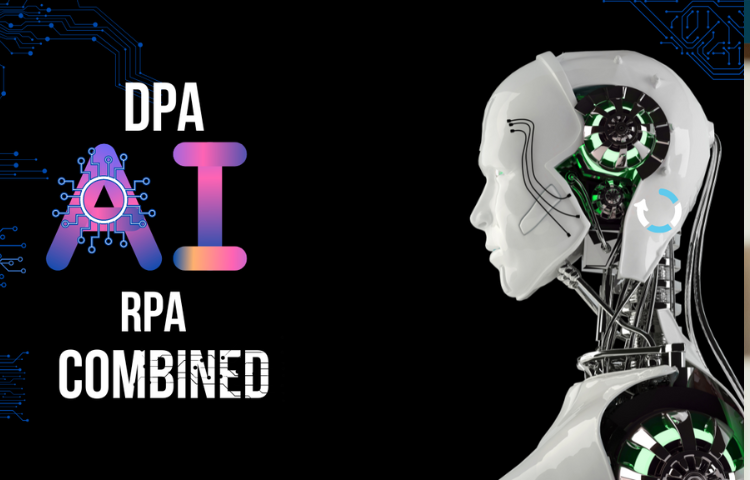

Prefer to listen instead? Here’s the podcast version of this article.
The term digital transformation gets thrown around a lot these days. But what exactly is digital transformation? And what technologies are involved? In its simplest form, digital transformation uses technology to change how businesses operate. This can include everything from automating tasks to using data to make better decisions.
Three leading technologies are driving digital transformation: digital process automation (DPA), robotic process automation (RPA), and artificial intelligence (AI). This article will give you a quick overview of each of these technologies and how they work together to help businesses transform.
Digital process automation (DPA) is the use of technology to automate tasks traditionally done manually. This can include anything from data entry to creating reports.
Robotic process automation (RPA) is the use of software to automate routine tasks previously performed by humans, including processing texts, documents, images, and emails.
RPA is designed to help companies improve efficiency and accuracy while reducing the cost of human labor. RPA can be used in various industries, such as healthcare, banking, finance, manufacturing, retail, and logistics.
What is data processing automation (DPA)?
DPA, or data processing automation, is a term that refers to the various methods and technologies used to automate the tasks of data processing. This can include everything from data entry and cleansing to complex data analysis and reporting. DPA can be used to speed up and improve the accuracy of data processing tasks, freeing up time and resources that can be better used elsewhere.
DPA can be implemented in several ways, depending on the needs of the organization. For example, some organizations may use simple scripts or macros to automate repetitive tasks, while others may use more sophisticated tools and processes. Regardless of the approach, DPA can offer several benefits, including improved efficiency, accuracy, and timeliness of data processing.
What is robot process automation (RPA)?
Robot process automation (RPA) uses software robots to automate repetitive, manual tasks. This technology is quickly gaining popularity as businesses look for ways to automate repetitive, low-value tasks to improve efficiency and customer satisfaction.
RPA can be used to automate a wide variety of tasks, including data entry, form submission, file creation, and email responses. In many cases, RPA can automate tasks that a human would otherwise perform. For example, a software robot could be used to populate a database with data from a webform.
RPA is typically used to automate tasks that are performed on a computer, such as data entry or file creation. However, RPA can also automate tasks performed offline, such as sending a customer an email or filling out a form.
What is artificial intelligence (AI)?
Artificial intelligence is a branch of computer science that includes the theory and practice of intelligent systems. It is considered the science and engineering of making intelligent machines. It is an area of research that deals with making computers behave like humans—, or in some cases, better than humans at performing specific tasks. Throughout history, individuals have been improving their thinking through various technologies, including the invention of the modern computer in the 1940s by Alan Turing and Grace Hopper.
How DPA, RPA, and AI Can Be Used Together To Create A Powerful Framework
DPA, or Data Processing Automation, is a process that automates the gathering and processing of data. RPA, or Robot Process Automation, is a process that automates the execution of routine tasks. AI, or Artificial Intelligence, is a process that automates the analysis of data. When these three processes are used together, they create a robust framework for businesses. DPA gathers the data that is needed for RPA to automate routine tasks. AI then analyzes the data to identify patterns and trends. This information can be used to improve the efficiency of DPA and RPA, making the entire framework more effective. The DPA-RPA-AI framework is a powerful tool that can help businesses to improve their efficiency and productivity.
Real-world Examples Of Businesses That Are Using DPA, RPA, and AI Framework
DPA, RPA, and AI are quickly becoming buzzwords in the business world. But what does that look like in the real world? Here are a few examples:
DPA, RPA, and AI are quickly changing the way businesses operate. These real-world examples show how powerful these technologies can be in streamlining operations and boosting efficiency.
The advantages of using a framework combining all three technologies
DPA, RPA, and AI are three cutting-edge technologies that are often used together to create a competitive advantage. Together, these three technologies can help businesses to operate more efficiently and effectively. For example, DPA can populate data fields automatically, RPA can generate reports regularly, and AI can provide recommendations on which products or services to offer. Businesses can enjoy a significant competitive advantage when all three technologies are used together.
The benefits of using the framework
DPA, RPA, and AI are powerful tools that can help organizations to optimize their operations and improve their bottom line. By using this DPA, RPA, and AI framework, businesses can take advantage of the strengths of each technology to create a seamless and efficient operation. DPA provides the ability to gather data quickly and identify trends, while RPA automates repetitive processes to improve efficiency. AI offers the ability to provide insights into data that can help organizations to make better decisions. By combining these technologies, organizations can create a leaner and more efficient operation that is better able to compete in the marketplace.
WEBINAR